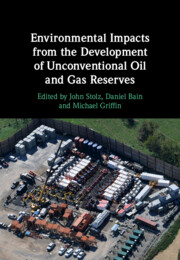Book contents
- Environmental Impacts from the Development of Unconventional Oil and Gas Reserves
- Environmental Impacts from the Development of Unconventional Oil and Gas Reserves
- Copyright page
- Contents
- Figures
- Tables
- Contributors
- Preface
- Part I Overview
- 1 Global Unconventional Oil and Gas Reserves and Their Development
- 2 Unconventional Shale Gas and Oil Extraction in the Appalachian Basin
- 3 An Overview of Unconventional Gas Extraction in Australia
- 4 The Governance of Fracking
- Part II Environmental Analysis
- Part III Case Studies
- Index
- References
2 - Unconventional Shale Gas and Oil Extraction in the Appalachian Basin
from Part I - Overview
Published online by Cambridge University Press: 28 July 2022
- Environmental Impacts from the Development of Unconventional Oil and Gas Reserves
- Environmental Impacts from the Development of Unconventional Oil and Gas Reserves
- Copyright page
- Contents
- Figures
- Tables
- Contributors
- Preface
- Part I Overview
- 1 Global Unconventional Oil and Gas Reserves and Their Development
- 2 Unconventional Shale Gas and Oil Extraction in the Appalachian Basin
- 3 An Overview of Unconventional Gas Extraction in Australia
- 4 The Governance of Fracking
- Part II Environmental Analysis
- Part III Case Studies
- Index
- References
Summary
The United States has an abundance of shale plays and unconventional oil and gas drilling now occurs in over 30 states. Major development has occurred in North Dakota, Texas, Louisiana, Arkansas, Michigan, Oklahoma, Wyoming, Colorado, Pennsylvania, Ohio, and West Virginia. The technological advances included the combination of horizontal drilling and hydraulic fracturing, new slick water formulations, and improvements in drilling technologies and fracking design such as “zipper fracking”. The upstream sector includes pre-drilling activities, pad preparation, drilling, hydraulic fracturing, and completion. The midstream sector includes pipeline construction and maintenance and processing facilities that separate the products of mixed gas. These processing facilities can be quite extensive, especially in Southwestern Pennsylvania, Eastern Ohio, and the panhandle of West Virginia where wet gas predominates. This review presents an overview of unconventional gas extraction in the Appalachian Basin as currently practiced in Pennsylvania, Ohio, and West Virginia.
- Type
- Chapter
- Information
- Publisher: Cambridge University PressPrint publication year: 2022



